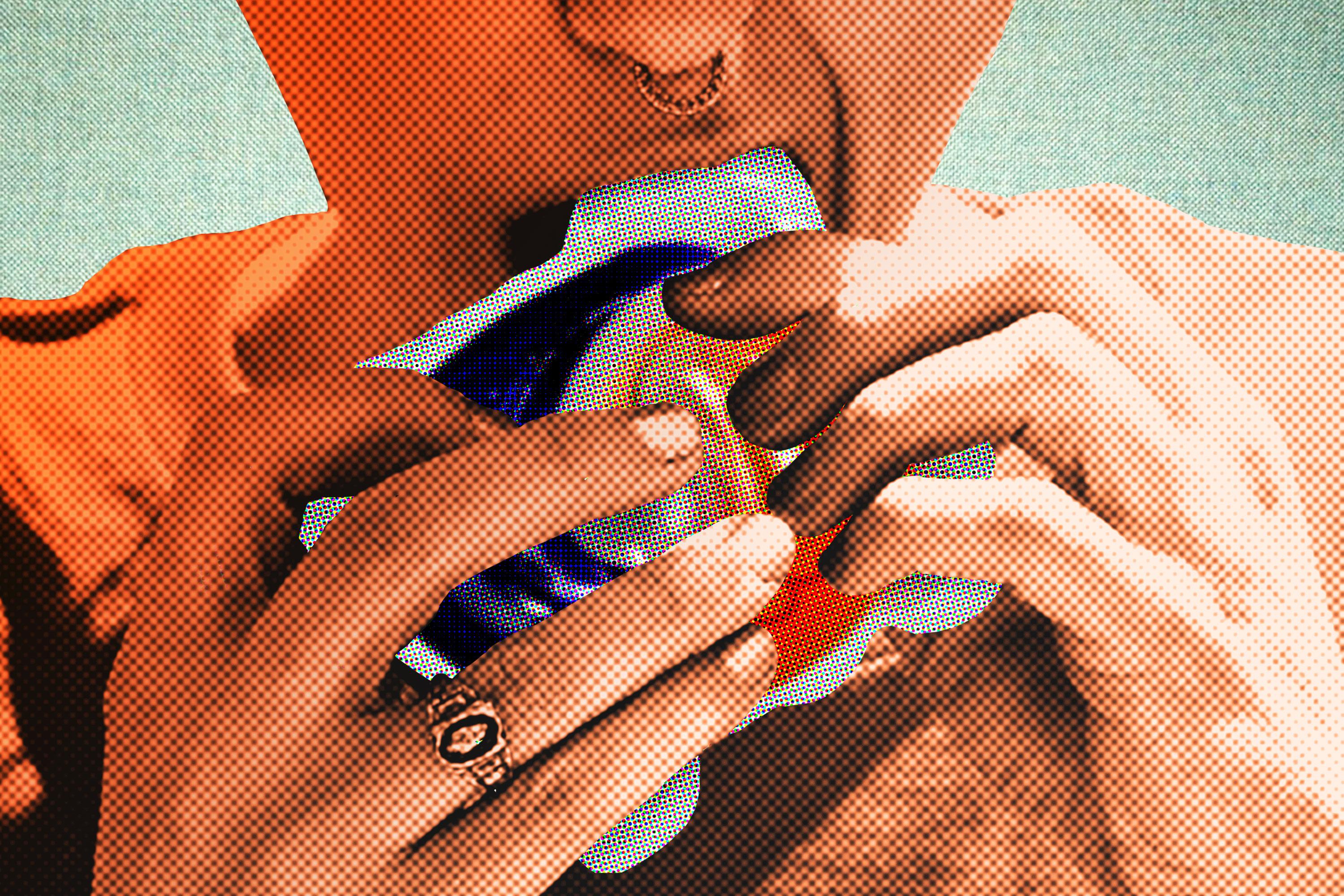Don’t Consume Tide Pods. Do Consume Tide Pod Content.
No, you will never understand the internet
Let us begin with the two most basic facts of the matter.
First: Tide Pods, the colorful, self-contained packets of laundry detergent heavily marketed by parent company Procter & Gamble since the product’s rollout in 2012—with an ad during the Oscars, no less—(a) look very much like candy, (b) look like a particularly delicious—dare I say luscious?—candy at that, and (c) come in a petite girth and weight that, societally, we have decided to refer to as “bite-size.”
Second: Tide Pods, like any other concentrated soap product—among them Gain Flings, all Mighty Pacs, and many others trying to find their way into the lucrative detergent pod business—are plainly toxic and a danger to small children, adults with dementia, and others unable to distinguish between a colorful soap pod and a food. They should not be eaten.
That these things are both so obvious and so obviously in conflict is perhaps the root of the problem.
Have you heard about the Tide Pod Challenge? If you’ve spent too much time on the internet over the past few weeks, you probably have. Like so many Ominous Buzzword Challenges before it, this one is gaining popularity and sweeping the nation and teens are putting videos online. Before this, we had the Cinnamon Challenge (swallow a spoonful of cinnamon), the Knockout Challenge (record yourself getting knocked out), the Condom Head Challenge (drop a condom filled with water over someone’s head so that it lodges over their faces like one great spermicidal balloon), and the Future Stone Challenge (knock out all your teeth to look like an elderly Emma Stone—just kidding, this one’s from Clickhole). And now we have the Tide Pod Challenge, wherein teens, or at least people on the internet—a return of the age-old question: Where does the internet stop and teens begin?—record themselves eating, or at least convincingly pretending to eat, some number of Gusher-like, distinctly poisonous Tide Pods.
The Tide Pod Challenge is really just a codified, evening-news-friendly version of a meme that’s been bubbling around for a while now, in which people profess their intense desire to dine on laundry pods. The underlying joke of all of it, of course, is that the pods are poison—but my, what a scrumptious-looking poison indeed.
There were Hot Pockets:
There were Oreos:
There were Stranger Things crossovers:
There were podcucks:
The joke spread to other household sources of toxicity: Dryer sheets could be blunt wraps, you know, and toilet cleaner and ice melt have a certain allure, and gee, what about insulation? There’s an entire tongue-in-cheek, internet-gross-out subreddit devoted to the subject under the name “Forbidden Snacks”: “Anything you know you’ve always wanted to eat/bite but you can’t.”
And so on. Once again: You should not do any of this. The reason Tide Pods have stood out, beyond the sheer absurdity, is because they really harm people. Last summer, the U.S. Consumer Product Safety Commission (CPSC) said it was aware of eight deaths over the past five years resulting from the consumption of laundry pods; six of those deaths were adults with cognitive impairments. Many, many more people are hospitalized each year with poisonings: The American Association of Poison Control Centers received reports of 10,570 instances of children aged 5 and younger being exposed to laundry pods in 2017 and says it has seen a small but significant rise in calls about laundry pods in the past few weeks, particularly among teens. Indeed, just months after Tide Pods hit the market, the CPSC declared laundry pods harmful to children and issued a safety alert. Threats of federal legislation prompted Tide and other manufacturers to make their containers more difficult to open and, in 2015, to add a bitter flavor to the compounds. (For what it’s worth, the number of poisonings per year is roughly equivalent to the annual poisoning from other common household items, like pens and air fresheners.)
The do-not-do-this drumbeat may, strangely, have fueled the current frenzy. Following a spate of consumption-related hospitalizations, Procter & Gamble began airing PSAs on television about the dangers of Tide Pods. Most feature doting mothers who turn away from their infants for just a moment, only for the child to reach for a box or bag of detergent pods, which the mother manages to stop just in time: “It only takes a second for an everyday item to become dangerous,” the voice-over intones.
Somber and important though the underlying message may be, the messages are just dark and—at least to laundry-doers without small children—fanciful enough to seem to some like a joke. “So Help Me God,” read the headline of one 2015 Onion story, “I’m Going To Eat One Of Those Multicolored Detergent Pods.” CollegeHumor released its own mock “Don’t Eat the Laundry Pods” PSA last year in which a man is casually advised not to eat the pods and then can’t get them off his mind. Had he not been warned, the video implies, the thought never would have occurred to him.
The latest person telling you that you should not do this is Fireball chugger and motor-boater Rob Gronkowski, who Procter & Gamble apparently hopes might be able to talk some sense into the kids. He appears in the company’s latest, and most desperate, attempt to end the Tide Pod jokes. His role is to stand by a washing machine—and a telltale orange Tide canister—and say “no” over and over. “Do not eat. – Gronk,” the screen reads. The message has somewhere north of 6 million views on Twitter.
The presumably exhausted Tide social media team has now taken to responding individually to people on Twitter who claim—at least mostly in jest, one imagines—to have eaten Tide Pods. YouTube has started to delete Tide Pod videos, including one originally titled “😂 TIDE POD CHALLENGE COMPILATION!!😂” with cry-laughing emoji on either side, as well as a much-shared—and thoroughly, obviously doctored—video of restaurateur, chef, and internet food critic Gordon Ramsay scarfing down some Pods. Another popular video that showed a group of furries eating a pizza covered in Tide pods—“Forbidden Fruit Pizza”—was also removed. It appears that other social networks might also be policing laundry pod content (Procter & Gamble says it’s working with “leading social media networks to remove harmful content”). One Instagram video of a man trying and dramatically failing to vape a Tide Pod was taken down this week; his account, @tardasskittytit (yes, really), is also no longer available. A copy of the same video on YouTube now bears the text, “This video has been removed for violating YouTube’s policy on harmful or dangerous content.”
Take this as a minor silver lining: While it’s clear that at least some of the producers of Tide Pod Challenge content are both actually consuming and being poisoned by the detergent, that number appears to be small. Indeed, given that the vast majority of those who have fallen ill from laundry pods in recent years are either children or adults with dementia, it’s possible that caretakers will be even more informed of the danger now: The wall-to-wall coverage of the Tide Pod Challenge has likely raised awareness of the risks of unattended pods in a way that a corporate PSA campaign never could. Which is not to say that the Great Tide Pod Memeing is something Procter & Gamble, which had already taken a one-year hiatus from YouTube advertising over “brand-safety concerns,” should be happy about. But hey—at least they haven’t gotten sued over stains yet.

